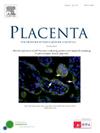Grading magnetic resonance imaging signs for diagnosing invasive placenta accreta spectrum disorders
IF 3
2区 医学
Q2 DEVELOPMENTAL BIOLOGY
引用次数: 0
Abstract
Introduction
Placenta accreta spectrum (PAS) disorders result from abnormal placental attachment, leading to varying degrees of myometrial invasion. Magnetic resonance imaging (MRI) plays a crucial role in assessing the depth and extent of placental invasion. This study aims to evaluate the correlation between quantified MRI findings and the diagnosis of PAS, as classified according to the FIGO system.
Materials and methods
A retrospective analysis was conducted on 556 high-risk PAS patients, defined as those with placenta previa or a history of previous cesarean sections. Ten predefined MRI signs were assessed board certified radiologists. Multivariate logistic regression was used to identify independent predictors of invasive PAS. The positive predictive value (PPV) and negative predictive value (NPV) were calculated to assess the diagnostic performance of signs.
Results
Among the 556 cases, 150 (26.98 %) were classified as non-PAS, 180 (32.37 %) as placenta accreta, 158 (28.42 %) as placenta increta, and 68 (12.23 %) as placenta percreta. Four MRI signs were identified as significant predictors of invasive PAS: bladder wall interruption (odd ratio [OR] = 160.17), placental ischemic infarction (OR = 19.91), placental protrusion (OR = 14.66), and myometrial thinning (OR = 14.07). The PPV of these signs ranged from 70 % to 85 %, while the NPV ranged from 65 % to 72 %. Multivariate analysis confirmed these MRI findings as independent predictors of invasive PAS.
Conclusions
This study identified four key MRI signs as reliable predictors of invasive PAS, which can effectively inform clinical decision-making regarding surgical interventions, such as cesarean hysterectomy.
求助全文
约1分钟内获得全文
求助全文
来源期刊

Placenta
医学-发育生物学
CiteScore
6.30
自引率
10.50%
发文量
391
审稿时长
78 days
期刊介绍:
Placenta publishes high-quality original articles and invited topical reviews on all aspects of human and animal placentation, and the interactions between the mother, the placenta and fetal development. Topics covered include evolution, development, genetics and epigenetics, stem cells, metabolism, transport, immunology, pathology, pharmacology, cell and molecular biology, and developmental programming. The Editors welcome studies on implantation and the endometrium, comparative placentation, the uterine and umbilical circulations, the relationship between fetal and placental development, clinical aspects of altered placental development or function, the placental membranes, the influence of paternal factors on placental development or function, and the assessment of biomarkers of placental disorders.
 求助内容:
求助内容: 应助结果提醒方式:
应助结果提醒方式:


